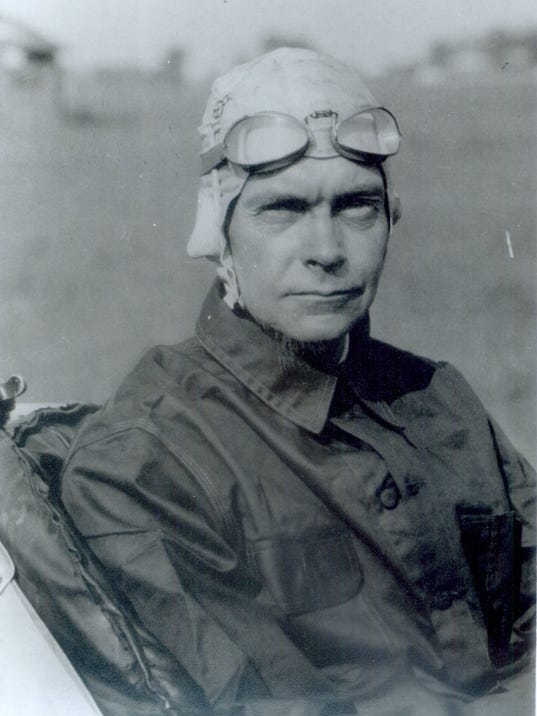Because so many years have passed, the odds are you never heard of Charlie Shambaugh (1877-1940).

His fame came three generations ago. And when he died, these words had earned places in the first sentence of his obituary: “mechanical genius” — “pioneer auto dealer” — “founder of Lafayette Airport.”
The writer of that sentence should have added “race car designer, builder, and driver.” Shambaugh, 62, died on June 4, 1940, in a tractor accident. It occurred on farmland where the former Lafayette Life Insurance home office stands at 18th and Teal. Shambaugh bought the 80-acre field for use as Shambaugh Airport during 1928-1934.
Charles Edgar Shambaugh, a Shelby Township farm boy, son of Abe and Mary Myers Shambaugh, had been born on family land near Montmorenci on Sept. 2, 1877. He had a brother and three sisters and began learning the nuts and bolts of machinery while running a thresher for his dad. When he was 17, the family moved to Sheetz Street in West Lafayette. Charlie attended the public school class of 1898 before the days of Red Devil Pride, caps, gowns, or diplomas.
After his schooling, Shambaugh went to work over in Lafayette at a foundry near Third and Romig. The foundry made iron corn shellers, engines, boilers, shafts, pulleys, and machinery repairs. When he was about 23, Shambaugh joined the Lafayette Engineering Company. Its office and factory functioned behind the same brick walls: the former Warren Industries site at South Street and Earl Avenue. The people at Lafayette Engineering designed and built iron bridges. A few of the bridges still stand in their rusting elegance on remote Indiana county roads. Shambaugh became foreman in the plant.
Read More Articles :
- When Cities Force Developers to Widen Roads, Everyone Loses
- Google Assistant appears to make a huge splash at CES 2018
- World careworn after Trump’s first year
- How reforms altered the car landscape
- Women’s Marches Across the World
Intrigued by the automobile, Shambaugh moonlighted by designing and building a gasoline engine that could pump water. In June 1903, at age 25, he opened Lafayette’s first car repair garage and dealership, the Auto Inn, at 210-212 Columbia St. Shambaugh soon was selling and servicing White steamers and gasoline-powered Pope-Toledos, both made in Ohio, and one-cylinder Cadillacs from Michigan.
The late David W. Chambers, a West Lafayette writer of local history, has written: “During 1903 backers of a rollerskate polo sports franchise built a `coliseum’ with an arching roof and concrete floor and about 2,000 bleacher seats at the northwest corner of Sixth and Alabama. [The Coliseum has been razed for the high-rise Holiday Inn Select.] “The roller-polo craze subsided after just a few money-losing years,” Chambers continued, “and in September 1909, Shambaugh bought the coliseum. It had its drawbacks because of all-wood construction and roof-support posts from the floor. The potential also was great for fire because gasoline and oil would be present in the newly named Shambaugh Garage. A competitor [a block away], in fact, named him all brick and concrete building the Fire Proof Garage. Only good luck and strict fire prevention measures spared Shambaugh’s coliseum.”
The greatest period of growth for the Shambaugh Garage took place during 1917-1928, spurred by sales of Buicks and Fords. One Ford field rep criticized the country-boy Shambaugh for wearing greasy coveralls at work instead of a suit and tie to project a “business image.” Shambaugh escorted that critic out after pressing a greasy fingermark on his stiff white collar.

